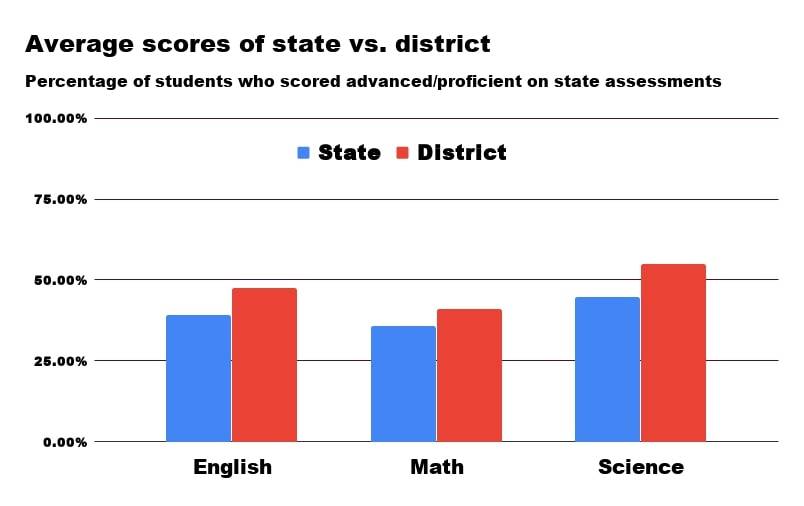Kenai Peninsula students scored on average higher on English, math and science than students did statewide, according to results released last week from annual statewide performance assessments.
The assessments are used to provide data for parents, educators, policymakers, communities and businesses about how Alaska schools are performing. Students score on a rubric of four levels — advanced, proficient, below proficient and far below proficient. The student scores are then used by the state to assess whether students are proficient or not proficient.
On the Kenai Peninsula 47.6% of students were proficient in English, compared to the state average of 39.2% of students. In math, 40.9% of peninsula students were assessed as proficient, compared to 35.7% of students statewide. In science, 54.9% of peninsula students were assessed as proficient, versus the statewide average of 44.6%.
The assessments took place this spring, with about 76,400 students across the state participating. The Performance Evaluation for Alaska Schools assessment, or the PEAKS assessment, tests students between third and ninth grade on current English and math standards. The Alaska Science Assessment focuses on state science standards for students in fourth grade, eighth grade and 10th grade.
For all grades in the Kenai Peninsula Borough School District, 92.71% of students who were eligible participated in the English and math evaluation.
Third graders in the district did the best in math, with more than 54% of assessed third graders considered proficient. Ninth graders in the district scored the lowest in math, with 70.42% assessed as below proficient in the subject.
Sixth graders in the district scored the highest in English language arts, with 56.03% of those students assessed as proficient in the subject. Ninth graders scored the lowest in English, with 39.89% of assessed high school freshman ranked as below proficient in the subject.
In the science assessment, 10th graders in the district performed the best, with 62.12% of district sophomores assessed as proficient.
The assessment’s 2018 results show the average scores for the district in English decreased this year. In 2018, 50% of students were assessed as proficient. In 2019, that number dropped to 47% of students assessed as proficient in English. The district’s math scores stayed steady between 2018 and 2019, with about 59% of students considered below proficient in both years across the district.
The district’s science scores decreased slightly between 2018 and 2019, with 55.9% of students in the district considered proficient in 2018, and 54.9% of students scoring the same in 2019.
The report shows that students across the state have showed improvement in several areas of study in recent years.
Alaska fourth graders have seen considerable improvement in their English assessment scores over the last three years. In 2017, fourth graders were 38.8% proficient in English. In 2018, those fourth graders became fifth graders and were assessed as 41.1% proficient in English. In 2019, those original fourth graders tested as sixth graders and improved their score to 45.5% in English proficiency.
Ninth graders in the state in 2019 achieved a 5.2% increase in math proficiency compared to ninth graders in 2018.
“While I am pleased to see pockets of improvement from year to year, we must not be satisfied with our results,” Alaska Education Commissioner Dr. Michael Johnson, said in a Sept. 5 press release from the state Department of Education and Early Development. “The 2019 PEAKS results show a large achievement gap still exists and the work to improve outcomes for all students must continue.”
State, district and individual school results can be found at the Department of Education and Early Development’s website.


